Ditapis dengan
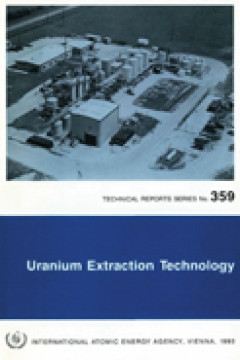
URANIUM EXTRACTION TECHNOLOGY (e-book)
-
- Edisi
- -
- ISBN/ISSN
- 9201035934 / 00741914 ; no. 359
- Deskripsi Fisik
- 380 p
- Judul Seri
- Technical Reports Series No. 359
- No. Panggil
- -
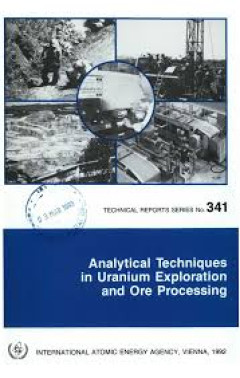
ANALYTICAL TECHNIQUES IN URANIUM EXPLORATION AND ORE PROCESSING (e-book)
-
- Edisi
- -
- ISBN/ISSN
- 9201037929 / 00741914 ; no. 341
- Deskripsi Fisik
- 211 p
- Judul Seri
- Technical Reports Series No. 341
- No. Panggil
- -
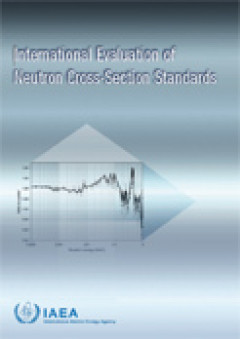
International Evaluation of Neutron Cross - Section Standards
Cross-section standards are required to be of high quality and accuracy to form the foundation of a wide range of important nuclear measurements and evaluations for both energy and non-energy applications. They constitute the yardstick for all other nuclear physics measurements. These standards have been re-assessed and evaluated to make significant improvements in the data, and to take into ac…
- Edisi
- -
- ISBN/ISSN
- 9201008074
- Deskripsi Fisik
- 173 p. : illus. ; 24 cm
- Judul Seri
- -
- No. Panggil
- -
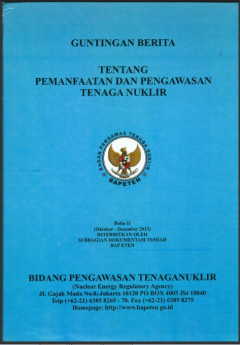
Earthquakes and Associated Topics in Relation to Nuclear Power Plant Siting
This Safety Guide was prepared as part of the Agency's programme for establishing Codes and Safety Guides relating to nuclear power plants. The main purpose of the text is to provide guidance on the determination of the design basis ground motions for a nuclear power plant at a chosen site and on the determination of the potential for surface faulting at that site. Additionally, the Guide discu…
- Edisi
- -
- ISBN/ISSN
- 920123191/00741892
- Deskripsi Fisik
- 60 p ; Illus 24cm
- Judul Seri
- Safety Series No. 50-SG-S1 (Rev.1)
- No. Panggil
- 621.48 IAE e

Radiation, People and the Environmental
Radiation is a fact of life. We live in a world in which radiation is naturally present everywhere. Light and heat from nuclear reactions in the Sun are essential to our existence. Radioactive materials occur naturally throughout the environment, and our bodies contain radioactive materials such as carbon-14, potassium-40 and polonium-210 quite naturally. All life on Earth has evolved in the pr…
- Edisi
- -
- ISBN/ISSN
- -
- Deskripsi Fisik
- -
- Judul Seri
- -
- No. Panggil
- -

Annalysis of Replies to an IAEA Questionnaire on Inspection and Enforcement b…
At a Special Session of the IAEA General Conference in September 1986, it was suggested that the IAEA could play a role in assisting Member States in the enhancement of their regulatory practices with the objective of increasing the confidence of the international community in the safety of nuclear power programmes. As the first stage of this assistance, the Agency initiated an IAEA Questionnai…
- Edisi
- -
- ISBN/ISSN
- 10114289
- Deskripsi Fisik
- 67 p. : illus. ; 29,5 cm
- Judul Seri
- IAEA-TEDOC-589
- No. Panggil
- -

Methods of Surveying and Monitoring Marine Radioactivity
This book consist : Introduction; Selection of required measurements and sampling; Survey; Monitoring; and Analytical procedures for radionuclides of interest. (Jml)
- Edisi
- -
- ISBN/ISSN
- -
- Deskripsi Fisik
- 95 p. : Illus. ; 21 cm
- Judul Seri
- Safety Series No. 11
- No. Panggil
- 614.876 IAE m
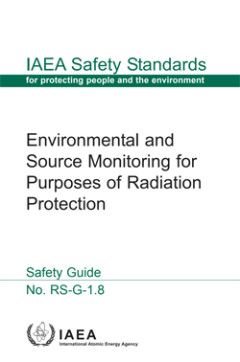
Environmental and Source Monitoring for Purposes of Radiation Protection, Saf…
The purpose of this Safety Guide is to provide international guidance, coherent with contemporary radiation protection principles and IAEA safety requirements, on the strategy of monitoring in relation to: (a) control of radionuclide discharges under practice conditions, and (b) intervention, such as in cases of nuclear or radiological emergencies or past contamination of areas with long lived …
- Edisi
- -
- ISBN/ISSN
- 9201134045 / 1020525X
- Deskripsi Fisik
- 119 p. : Illus. ; 24 cm
- Judul Seri
- Safety Standards No. RS-G-1.8
- No. Panggil
- -
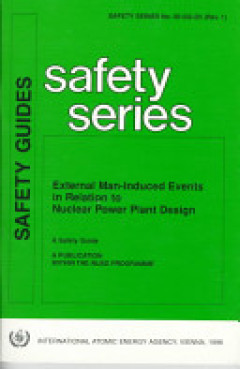
External Man-Induced Event in Relation to Nuclear Power Plants Design, Safety…
This guide advises on the protection of nuclear power plants against the effects of external man-induced events which originate outside the site and which have been identified and selected as design basis external man-induced events (DBEMIEs) according to Safety Guide No. 50-SG-S5, to which this guide is complementary.
- Edisi
- -
- ISBN/ISSN
- 9201238800
- Deskripsi Fisik
- 43 p. : Illus. ; 24 cm
- Judul Seri
- Safety Series No. 50-SG-D5
- No. Panggil
- -
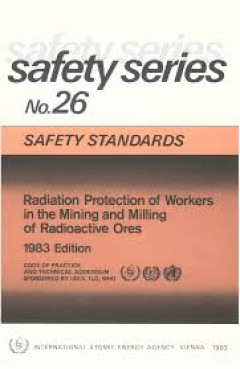
Safety Standard Radiation Protection of Workers in the Mining and Milling of …
-
- Edisi
- -
- ISBN/ISSN
- -
- Deskripsi Fisik
- -
- Judul Seri
- Safety Series No. 26
- No. Panggil
- -
 Karya Umum
Karya Umum  Filsafat
Filsafat  Agama
Agama  Ilmu-ilmu Sosial
Ilmu-ilmu Sosial  Bahasa
Bahasa  Ilmu-ilmu Murni
Ilmu-ilmu Murni  Ilmu-ilmu Terapan
Ilmu-ilmu Terapan  Kesenian, Hiburan, dan Olahraga
Kesenian, Hiburan, dan Olahraga  Kesusastraan
Kesusastraan  Geografi dan Sejarah
Geografi dan Sejarah